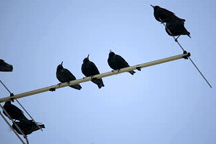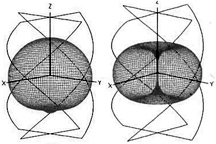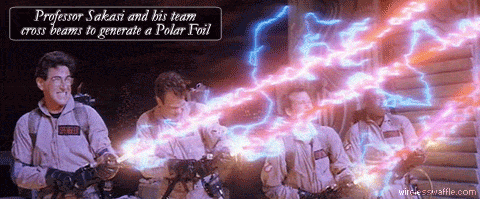Wednesday 1 April, 2015, 11:01 - Spectrum Management
It is almost a law of physics, that the best way to increase the coverage of a transmitter is not simply to turn up the power, but better still to increase the height of the transmitting antenna. Wireless Waffle has discussed the relationship between height, power and coverage before. It is, however, almost a law of nature, that increasing the height of an antenna through building a taller mast will incur the wrath of residents and environmental protestors and as such, there is a political limit to just how high antennas can be mounted. Wouldn't it be great if someone invented invisible, or nearly invisible antennas? One option might be to use atom thin superconducting graphene tubes that were self-supporting but so thin as to be virtually invisible. The only downside of such an antenna would be that any bird that flew into it would be immediately sliced in two as the antenna would have almost infinitely sharp edges.
Wouldn't it be great if someone invented invisible, or nearly invisible antennas? One option might be to use atom thin superconducting graphene tubes that were self-supporting but so thin as to be virtually invisible. The only downside of such an antenna would be that any bird that flew into it would be immediately sliced in two as the antenna would have almost infinitely sharp edges.Another option could be to use multiple beams to project and focus energy at a specific point to materialise a virtual antenna. If force (thrust) can be generated by electromagnetic waves in an EmDrive, then could a similar principal be used to project an antenna at a point away from the source of the physical beams? This far-fetched idea is being considered by Professor Nisan Sakasi at the Communications and Spectrum Management Research Centre at the University of Bilkent, in Turkey.
By focussing very narrow microwave beams which cross in a specific quadrifilar pattern, the air atoms at that point can be ionised to become electrically conductive and with careful tuning,
 can project a virtual antenna at a point separated from the microwave transmitters by several metres. Professor Sakasi has called the antennas 'polar foil', because the area where the virtual antenna is formed, if viewed from polar angles, glints a little like aluminium foil. Of course at night they are completely invisible.
can project a virtual antenna at a point separated from the microwave transmitters by several metres. Professor Sakasi has called the antennas 'polar foil', because the area where the virtual antenna is formed, if viewed from polar angles, glints a little like aluminium foil. Of course at night they are completely invisible.The difficulty for the team at Bilkent is now to find a way of feeding the polar foil with RF energy so that it can actually radiate useful signals. The team believe that with the right beamforming, a 'virtual feeder' could also be created permitting injection of RF signals from a lower point. A secondary problem is that the amount of electricity needed to feed the microwave transmitters which generate the polar foil is 'in the region of kiloWatts', meaning that the power required to form the virtual antennas is currently far more than that required to generate the radio signals that would feed into them.
The advantages of such a system is that, with tighter beamforming, it may be possible to generate the polar foil not just metres away from the microwave transmitters but tens of metres away. As such, antennas could be virtualised far above the ground, without the need to build masts at all. The fact that the antennas are virtual, and not real, means that problems like slicing a bird in half as it flies into the antenna are virtually unreal and thus no damage would be caused.
A spokesperson for the Royal Society for the Protection of Birds, told Wireless Waffle that:
We are very concerned about the idea of superconducting graphene antennas being erected across the country, however we think that many birds would like the idea of a network of virtual feeders!

